Released in November 2020, this new book from Pen & Sword is a handy book that shows off a number of Industrial locomotives with super photos and information.
This book is written by David Mather and measures 25cm by 18cm and is over 200 pages long. The published price of this book is £25 and can be picked up on Amazon for a similar price. Additionally, this book is available for Kindle for just £8.50.
This book is full of photos and history of the locomotives as well as photos of those locomotives which made it into preservation.
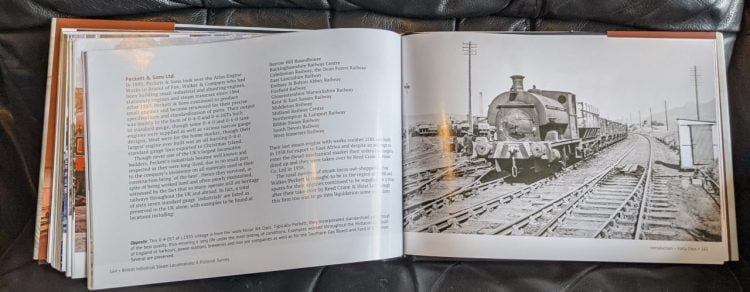
The book is split up into a number of categories, there is an introduction, the main section, an appendix and a bibliography.
The introduction is rather detailed and delves into the archives to describe the early days of these locomotives. For this information and history, this section is probably the most detailed section, with lots of information to read, whereas the sections thereafter is well split into photos/text.
The main bulk of this book is split into 39 sections covering all the builders of Industrial Steam Locomotives – there are too many to list here, but some of the builders included in this book are Andrew Barclay, Hawthorn Leslie, Fletcher Jennings & Co, Manning Wardle, Kerr Stuart, Lambton Engine Works and Vulcan Foundry.
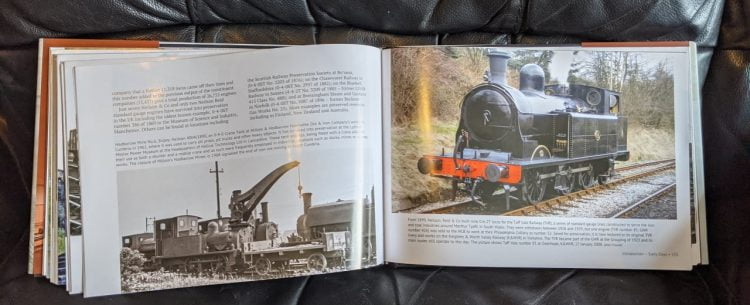
One thing I would have liked to see in this book is these builders split into proper chapters, whereas, currently they are just stopped and started with just a bold title (they are listed in the Contents page though – so it is easy to find the right page).
With so many sections, this book is great for those wanting to find out more about the Industrial types of locomotive. They mainly follow the same format, whereby, the author goes into detail of the locomotive builders history, and how the class of locomotive came about, and then goes on to details regarding preservation.
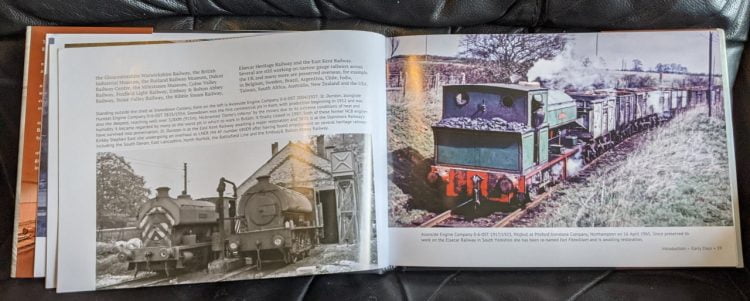
Its nice to see some narrow gauge locomotives making this book too – these are sometimes overlooked in some books.
I enjoyed the detailed images and condensed text. I have found the text to be detailed enough, but short enough to not overwhelm me.
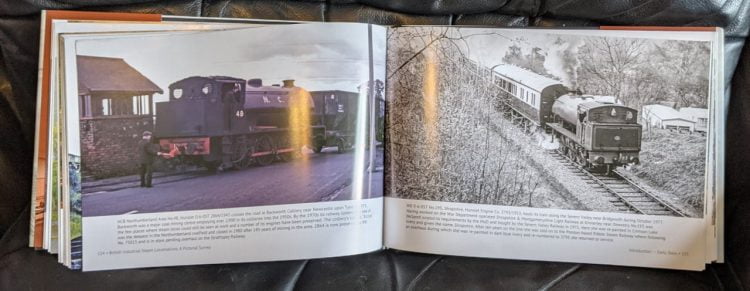
The handy size means it is easy to carry around, on the train, bus or just in your front room. One thing I have enjoyed particularly is reading the text one day, and then the next going back and exploring the variety of images.
In summary, then, this book is a detailed yet visual insight in the large variety of industrial steam locomotives built in the UK. This type of locomotives are sometimes overlooked for the bigger express locomotives, but these industrial locos played a crucial role in the progress Britain made, and this book covers this history perfectly.
It is great to see old photographs of the locomotives but also the modern preserved photos for comparison.
The book is available to purchase from Amazon as well as from Pen & Sword
We would like to thank Pen & Sword for providing us with a copy of the book for review.
A quirky thing we have found with the book is that throughout the book at the bottom near the page number it says Introduction – The Early Days. Perhaps this is only an issue with our review copy and this does not impede on the detailed photos and information in this book.


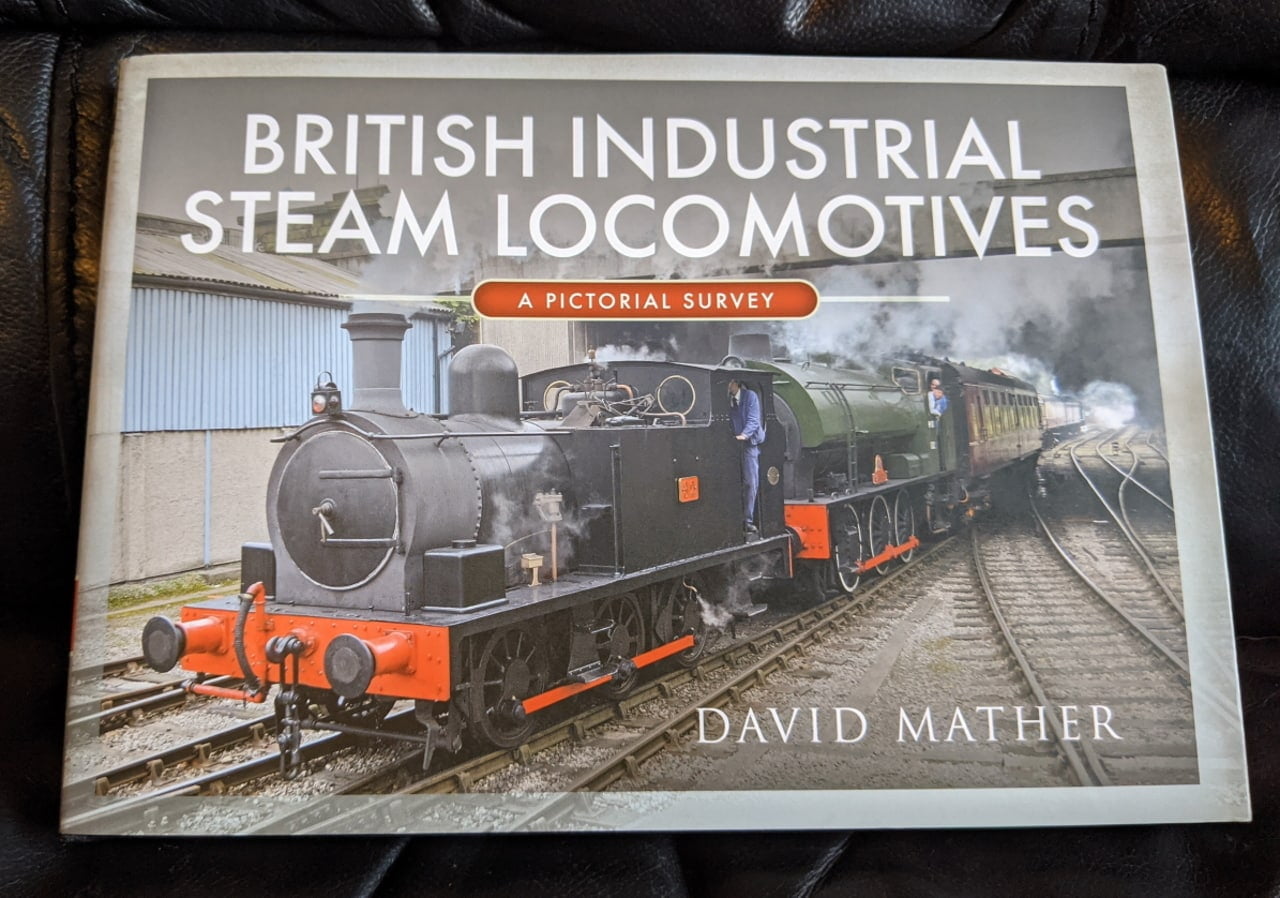
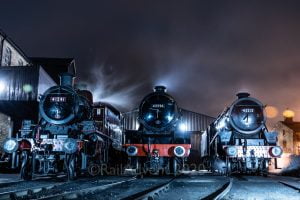


Responses
Most of These Well-Preserved ex-Industrial Steam Locos, Were Built By various UK Loco Maunfacturers of the Past… Such As,
Andrew Barclay & Sons, Avonside Engine Company, W.G.Bagnall, Peckett & Sons, Hudswell Clarke, Hunslet Engine Company, Yorkshire Engine Company, Manning Wardle, Hawthrone Leslie & Co, Robert Stephenson & Hawthorne, Neilson & Company, Fletcher, Jennings & Company, the Vulcan Foundry, even Beyer Peacock & Company Too.
Wow, This is Certainly An Innteresting ‘Must Have’ Book to Read.
Especially As it’s All About Classic British Industrial Steam Locos, And I Myself Do Believe, There’s Hundreds of These, Well-Preserved on Most Heritage Railways cross the British Isles.
There’s Standard -Gauge, As Well As Narrow-Gauge, let alone Minimum-Gauge In-Between.